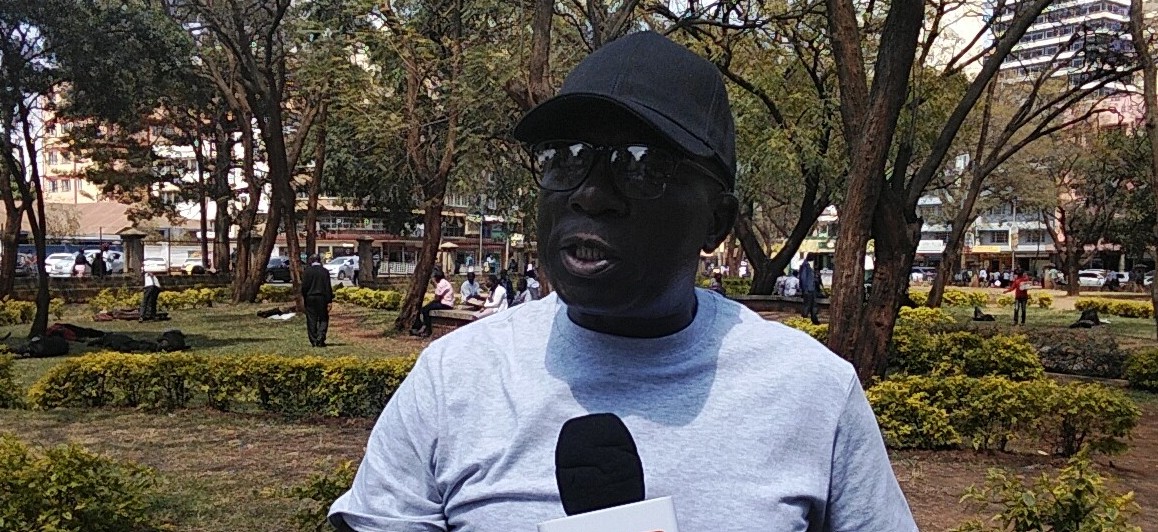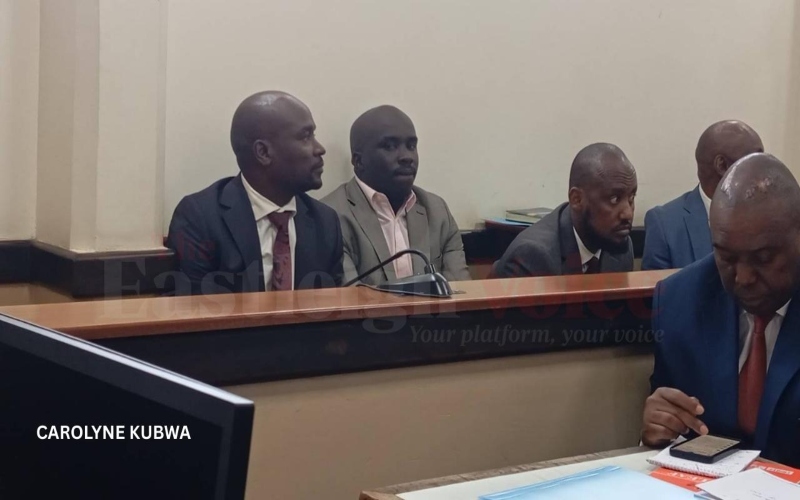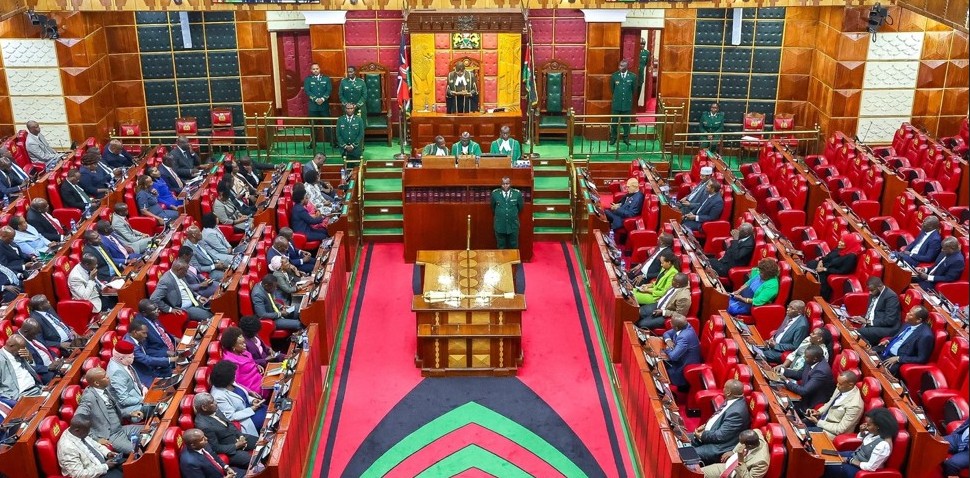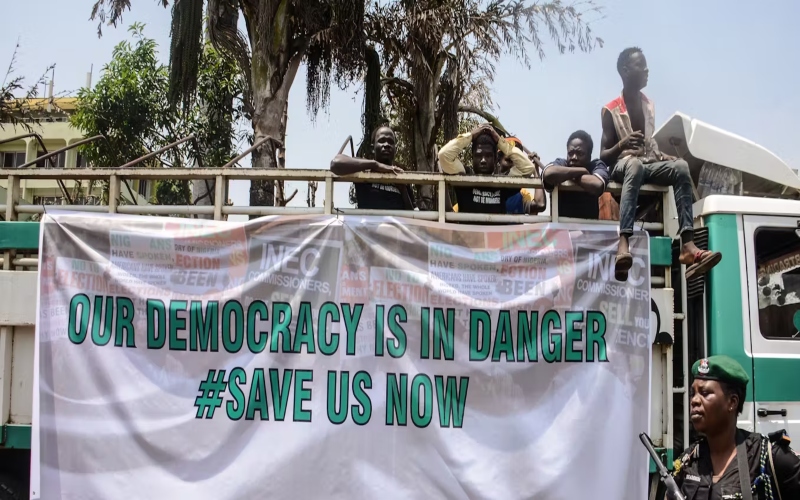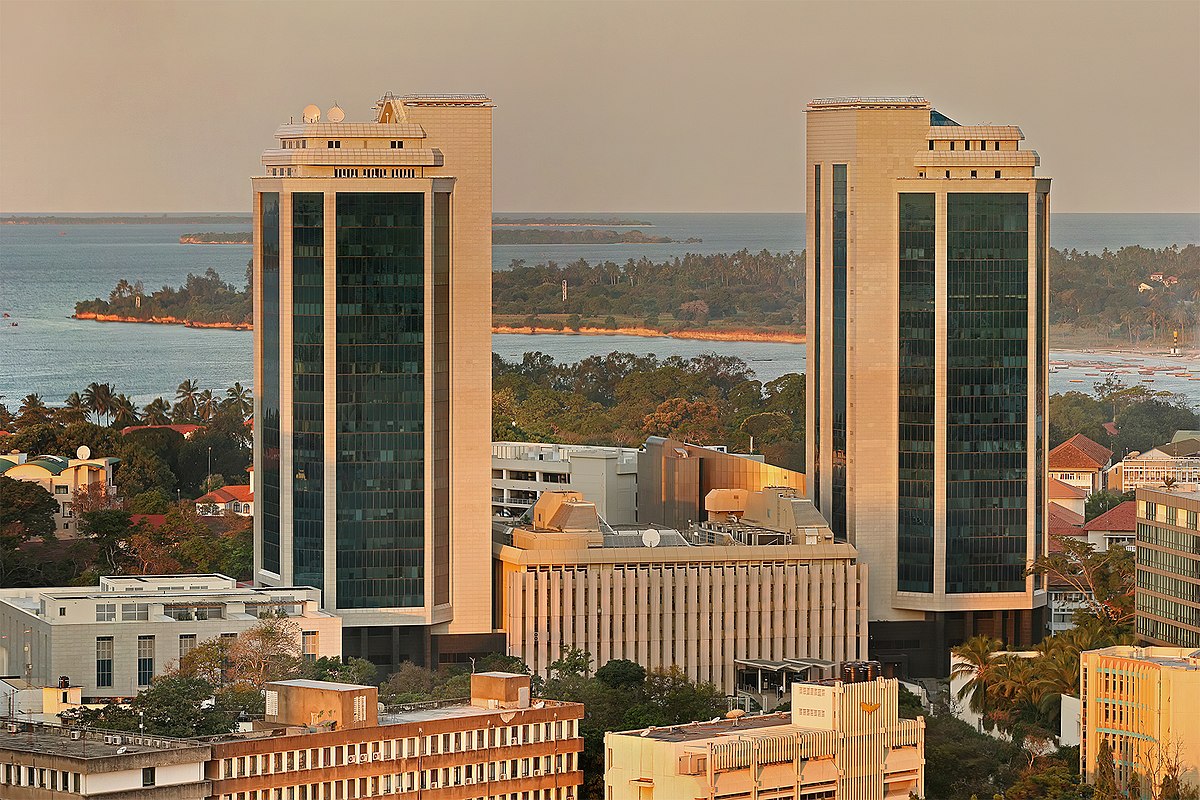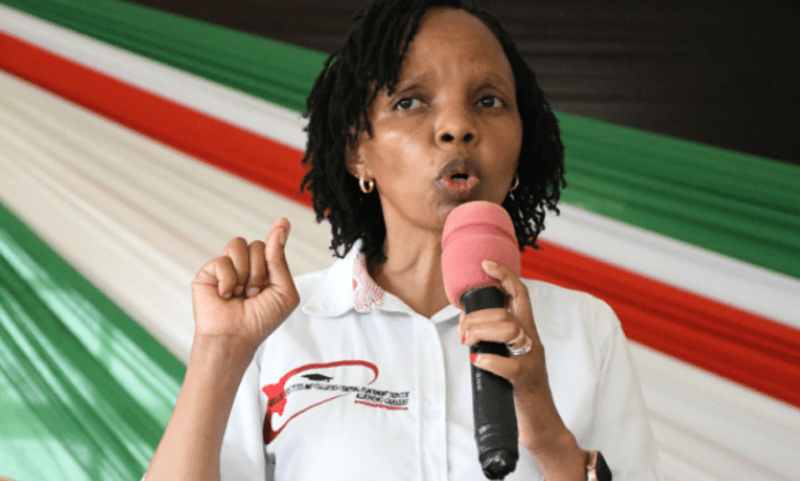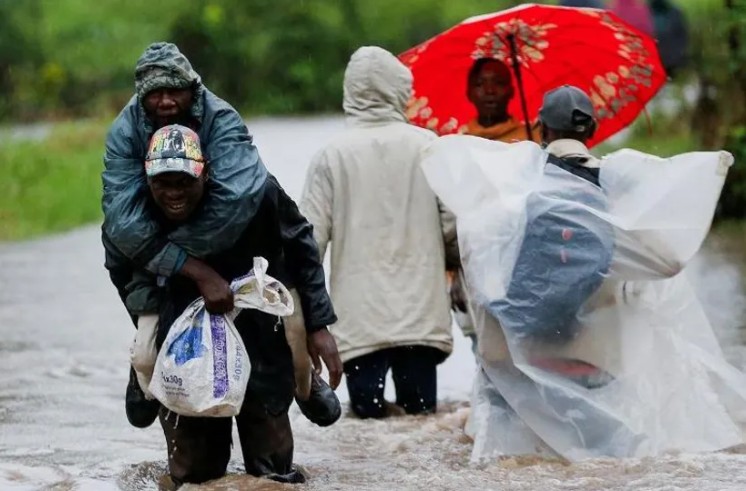Kenyan mothers struggle for survival, dignity and care in shadow of haemophilia
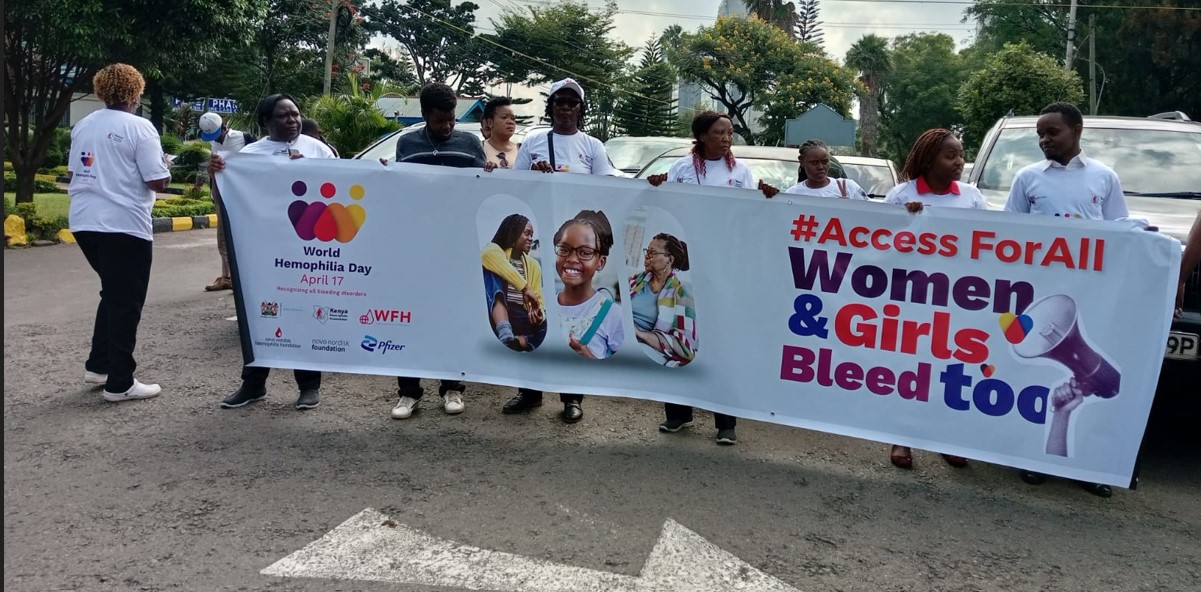
Etot's plea to the government is to include outpatient services for haemophilia in the Social Health Authority (SHA) package.
For 31-year-old Mary Etot from Turkana County, living with a rare blood disorder has meant enduring not only physical pain, but also deep social stigma and isolation.
From a young age, Etot knew something was different. While most women had regular menstrual cycles, hers were unusually heavy, lasting up to seven days and often leaving her dizzy and weak. Her symptoms first appeared as frequent nosebleeds — a warning sign that was dismissed for years.
More To Read
But the turning point came while in school.
When severe bleeding episodes became too obvious to ignore, authorities wrongly assumed she had undergone an abortion. She was expelled — not just from class, but from the understanding and support she so desperately needed.
Although Etot had grown accustomed to the pain over the years, things took a turn for the worse during her pregnancy.
Her journey into motherhood became a relentless cycle of hospital visits and frequent blood transfusions. Then, after giving birth to her first child, came the devastating news: her baby was diagnosed with haemophilia, a rare genetic bleeding disorder that prevents the blood from clotting properly.
"I was shocked. I had never even heard of haemophilia before," Mary recalls. "Then came the rejection — from my own family. People said I was cursed. Some said I had been bewitched."
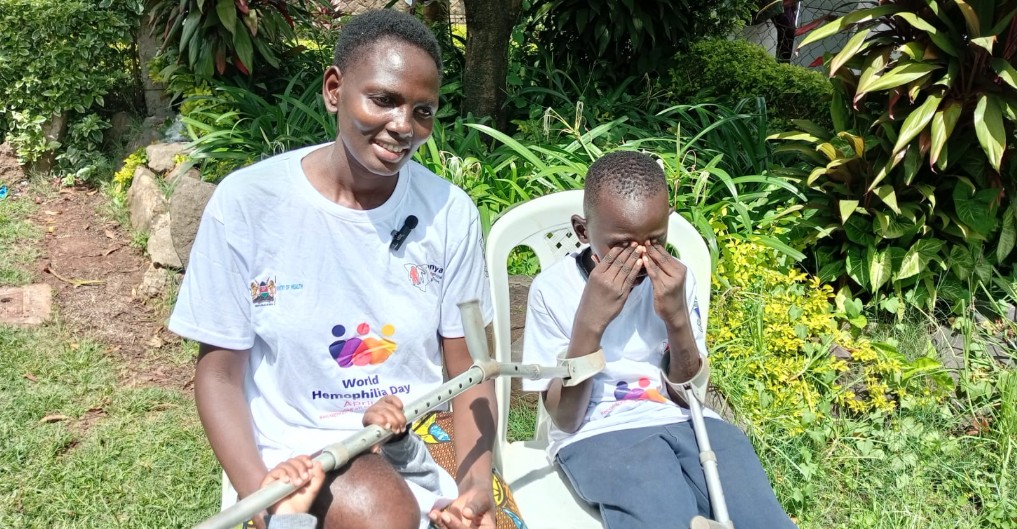 Mary Etot lamented how a lack of medication caused her son's paralysis due to haemophilia. (Photo: Charity Kilei)
Mary Etot lamented how a lack of medication caused her son's paralysis due to haemophilia. (Photo: Charity Kilei)
Low awareness
In Turkana County, where awareness about such conditions is painfully low, Etot has become a target of ridicule.
Neighbours whisper that she's cursed. Even some health workers didn't understand her condition and simply told her to eat more fruits. Her own family believes the disorder is unnatural — her father thinks it's a sign of a curse, and some relatives cruelly suggested she had sacrificed her child because of how frequently he's in and out of the hospital.
Raising a child with haemophilia has been a relentless struggle.
In 2021, her son lost his ability to walk after he failed to receive his necessary dose of Factor IX, a lifesaving clotting protein. Since then, Mary has not had a moment of rest.
"Every single day, I wake up and take him to the hospital. I can't work. I can't leave him. He needs me constantly," she says.
High cost of treatment
The constant shortage of medication and the high cost of treatment make every injury a life-threatening emergency.
For any significant bleeding episode, they must travel all the way to Kenyatta National Hospital in Nairobi — a trip that is not only long and painful but incredibly expensive.
Even worse, treatment isn't fully covered.
"We pay out of pocket for physiotherapy and some medicines. We go weekly, and the cost is unbearable. I used to come twice a week, but now I depend on well-wishers from TikTok. Sometimes, I feel so hopeless. I've thought of giving up."
Children with haemophilia in her community face another cruel injustice — being kicked out of school. With limited understanding and no support systems in place, they are seen as burdens rather than children in need of care.
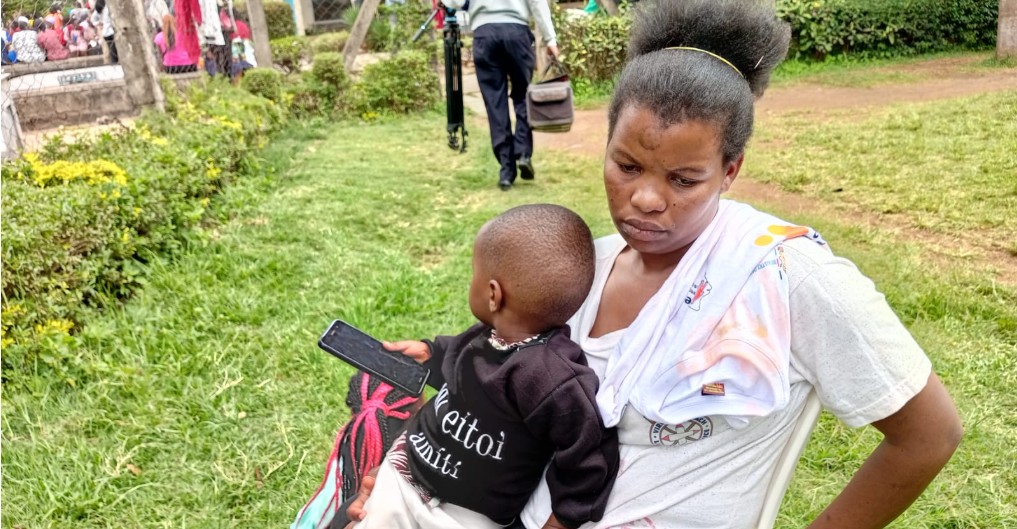 Dorcas Kinyambo is desperate for a solution as her son has not walked for the last two months due to a lack of medication. (Photo: Charity Kilei)
Dorcas Kinyambo is desperate for a solution as her son has not walked for the last two months due to a lack of medication. (Photo: Charity Kilei)
SHA outpatient services
Etot's plea to the government is to include outpatient services for haemophilia in the Social Health Authority (SHA) package.
"We need help. Physiotherapy should be covered. Medications like Factor VIII and Factor IX must be accessible. Watching our children suffer, unable to walk, is unbearable. My son now uses crutches. This is not just a disease — it's a daily heartbreak."
Etot is not alone in her struggle.
For the past two months, Dorcas Kinyambo has been silently enduring her own pain. Her 3-year-old son started limping, and what initially seemed like a small issue has now escalated into a frightening medical crisis. A severe blood clot has formed in his foot, and despite countless visits to the hospital, she has yet to find the help he urgently needs.
"I was told they need to drain the clot and then give him an injection, but the medication isn't available," she says, her voice filled with despair.
"Watching my baby crawl instead of play, and seeing other children who are now crippled from similar situations struggle to walk, breaks my heart. I don't know where else to turn. I feel so helpless."
Like many parents of children living with rare bleeding disorders, Kinyambo lives with a constant fear: that any minor injury could turn into a life-threatening situation.
Her little boy recently fell, and what should have been a simple scrape turned into a month-long bleeding episode. They spent that time in Kenyatta National Hospital, with no one to support them. No visitors. No relatives. Just a mother trying to hold herself together.
Emotional and financial toll
The emotional and financial toll has been enormous. Kinyambo cannot work because her child requires constant care. Every moment is filled with anxiety — checking to make sure he hasn't fallen, hasn't bruised, hasn't started bleeding again.
"We live in constant alert. We can't sleep, can't relax, can't leave them alone. If anything happens, we rush to the hospital. But there's no support system. We are alone."
Like other mothers in similar situations, Kinyambo longs for relief — for access to treatment, for recognition, for a chance to simply breathe.
"If the burden could be eased, even a little, it would change our lives. We just want to care for our children without the fear of losing them to something as small as a fall."
Equity in healthcare
On World Haemophilia Day, the call for equity in healthcare has never been louder.
Speaking on behalf of the CEO of Kenyatta National Hospital (KNH), Dr Catherine Nyongesa, the Director of Medical Services, emphasised the urgent need to extend care and recognition to all, including women and girls who are often overlooked in haemophilia diagnosis and treatment.
"In some traditional circumcisions, boys with undiagnosed haemophilia have bled excessively — some even fatally. These are preventable tragedies."
Nyongesa highlighted that the theme, "Access for All: Women Bleed Too," challenges healthcare systems and society at large to move beyond outdated perceptions and recognise that women and girls, too, suffer from bleeding disorders — often silently.
"Every individual deserves compassionate, equitable healthcare, regardless of their gender," she affirmed.
So far, 403 individuals have been diagnosed with haemophilia at KNH: Haemophilia A: 343 cases, including 8 women and girls; Haemophilia B: 49 cases.
While haemophilia has long been seen as a male-dominated condition, these figures reveal a hidden population of female patients, many of whom go undiagnosed or misdiagnosed for years. Mothers, in particular, are often carriers and silently experience symptoms such as excessive menstrual bleeding, gum bleeding, and frequent nosebleeds.
Support mothers
"Let us not forget the mothers. They are not just caregivers. Many are carriers who suffer themselves, often undergoing multiple blood transfusions. Today, we honour their strength and advocate for their inclusion in both diagnosis and support," Nyongesa said.
She noted key milestones in haemophilia care in Kenya, such as successful circumcision procedures for about 100 men with haemophilia in 2021 and 2022 — a significant achievement in safe surgical interventions for this community.
However, there's still a long road ahead.
Nyongesa called for a scale-up in early diagnosis, investment in local research, and the removal of systemic barriers that prevent patients from accessing care.
"Our data can drive research. But more importantly, our commitment must go beyond treatment — it must be about dignity, education, and a better future for every patient."
Dr Kibet Shikuku, the head of the Haemophilia Unit at KNH, echoed these concerns, warning that haemophilia should no longer be seen as a rare disease.
Suffering in silence
"We've documented close to 1,000 cases in Kenya, and around 40 per cent are currently receiving care at KNH. That number is steadily growing," he said.
Yet many continue to suffer in silence.
Shikuku explained that a significant number of women have been bleeding excessively for years, often during their periods or after minor injuries, without ever realising they might have a bleeding disorder.
"They dismiss the symptoms. It becomes normal to them. But they are living with a dangerous condition that needs proper diagnosis and care."
One of the greatest challenges is the high cost of treatment. A single injection of clotting factor — the essential medication needed to stop bleeding — can cost up to Sh50,000. For many families, this is out of reach, especially when treatment is required weekly or more frequently during a bleeding episode. Over time, treatment costs can run into the millions.
Gene therapy
Looking to the future, Shikuku said that gene therapy — a promising long-term solution for haemophilia — is being explored.
"We are working on building the infrastructure for gene therapy in Kenya. It's a costly treatment, yes, but it holds the potential to transform lives. When we have the capacity," he said.
Haemophilia is a rare, inherited bleeding disorder that affects approximately 830,895 people worldwide, according to the World Federation of Haemophilia (WFH). Of these, about 282,266 individuals have severe haemophilia. The disorder is primarily seen in males, with a prevalence rate of about 1 in every 5,000 male births.
Types of haemophilia
There are two main types of haemophilia: Haemophilia A, which is caused by a deficiency of clotting factor VIII, and Haemophilia B, which results from a deficiency of clotting factor IX. Haemophilia A is more common than Haemophilia B.
The symptoms of haemophilia can vary depending on the severity of the condition, but generally include frequent or unexplained nosebleeds, easy bruising, and prolonged bleeding after even minor cuts or injuries.
In more severe cases, bleeding into the joints can occur, causing pain, swelling, and limited mobility.
People with haemophilia may also experience blood in their urine or stool, and infants may show signs like unusual irritability or prolonged bleeding after circumcision. In rare instances, internal bleeding, particularly in the brain, can occur, which is a medical emergency.
While there is no cure for haemophilia, it can be effectively managed with proper treatment.
Replacement therapy
The most common treatment involves replacement therapy, where clotting factor concentrates are injected to replace the missing clotting factors. This can be done prophylactically, meaning regularly to prevent bleeding, or on-demand, when bleeding occurs. In addition to factor replacement, some people may receive non-factor therapies such as Emicizumab, which helps promote clotting by mimicking the function of missing clotting factors.
Supportive care, including physiotherapy to prevent or recover from joint damage, pain management, and proper wound care, is essential for individuals with haemophilia.
Gene therapy, an emerging treatment that seeks to insert a functional gene to produce clotting factors, offers hope for long-term treatment, although it is still under development and not yet widely available.
Without proper treatment, haemophilia can severely impact a person's quality of life, leading to chronic pain, permanent joint damage, and frequent hospital visits. However, with early diagnosis, access to effective treatments, and ongoing care, people with haemophilia can lead relatively normal lives.
Top Stories Today
